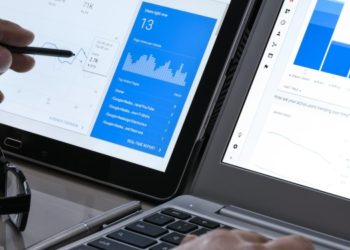Since E-commerce is a highly competitive niche, a pricing strategy can make or break your business. This is why many sellers resolve to implement a competitive pricing strategy. This method revolves around setting prices based on market dynamics, competitor analysis, and customer demand.
To effectively implement this strategy, e-commerce retailers are turning to automated price monitoring tools. They enable companies to monitor market fluctuations, stay ahead of the competition, and make effective pricing decisions. This blog post delves into the concept of competitive pricing strategies and explains how to gather competitive pricing data for leveraging them.
What is a Competitive Pricing Strategy?
This practice involves setting prices for products or services based on the prevailing market conditions and rivals’ rates. Instead of relying solely on cost-based or customer-based pricing, businesses consider other sellers’ offers to gain a competitive edge. This approach requires continuous monitoring of the market, tracking rivals’ pricing moves, and making adjustments accordingly.
Benefits of Competitive Pricing Strategies
Here is why you should consider the rates of your rivals when building your own pricing system:
- A competitive price strategy allows businesses to position themselves strategically within the market. Through their pricing policy, companies can differentiate themselves and potentially capture a larger market share.
- When prices are set in line with market demands and competitor rates, businesses are able to attract price-sensitive customers. Better offers help retailers drive sales volume and revenue even in saturated markets.
- Competitive pricing helps businesses capture the attention of customers looking for the best deal. By constantly monitoring market players, brands can offer the best prices and retain their existing customer base.
- A competitive strategy is impossible without gaining insights into the market dynamics and customer behavior. This understanding allows companies to perform better product positioning, reach target audience, and launch successful promotional campaigns.
- Competitive pricing tactics often go hand in hand with dynamic pricing techniques. Automated price monitoring tools enable businesses to react swiftly to market changes, demand fluctuations, and competitor actions. This agility empowers companies to adjust prices dynamically, maximizing profitability while satisfying customer needs.
Examples of competitive pricing strategies
Depending on how a brand positions its pricing relative to competitors, there are different strategies possible:
- Price matching involves matching or offering a lower price for the same product. It allows businesses to attract price-sensitive clients who become more likely to make a purchase.
- Penetration pricing means setting prices below the market average to gain a larger audience quickly, especially those who are seeking the best deal. Once they have captured a significant market share, sellers can gradually increase prices.
- Dynamic pricing involves adjusting rates in real-time based on factors such as demand, competitor prices, and market conditions. For example, during periods of high demand, prices can be increased, while during off-peak periods, rates can be reduced to stimulate sales.
- Bundling and package pricing strategy involves combining multiple products or services together and offering them at a discounted price compared to purchasing each item individually. Bundling allows brands to increase the perceived value for buyers while potentially increasing the average order value.
- Loyalty pricing focuses on offering special discounts or pricing tiers to loyal customers or members of a bonus program, according to https://sendpulse.com/support/glossary/loyalty-program. Exclusive pricing benefits motivate clients to make repeat purchases and foster customer retention.
- Flash sales and limited-time offers create a sense of urgency among customers and encourage immediate purchases. Sales generate excitement, attract new customers, and boost sales volume within a short timeframe.
- Competitive auctions allow customers to bid on products or services. This approach creates competition among potential buyers, driving up prices and maximizing revenue.
It’s important to note that the effectiveness of each pricing approach can vary based on the industry, target market, and specific business goals.
Automated Price Monitoring Tools in E-commerce Retail
Price monitoring software has emerged as an essential instrument for e-commerce businesses aiming to implement competitive pricing strategies effectively. These tools offer a range of features designed to simplify and streamline the process of monitoring competitor prices and market trends. According to Symson, AI is the number one technique that can boost the effectiveness of your pricing strategy.
Here are the major functions of price monitoring software — they can help you build an efficient strategy:
- Competitor Price Tracking. Automated tools leverage web scraping and data analytics to monitor sellers’ prices in real-time. These tools extract data from various e-commerce platforms and provide businesses with detailed insights (for example, rate patterns, or anomalies) into their competitors’ pricing strategies.
- Historical Data Analysis. Automated price monitoring software stores historical pricing data, allowing users to track long-term price trends and patterns, identify seasonal price fluctuations, and make accurate predictions for future pricing strategies.
- Price Comparison and Benchmarking. These tools enable businesses to compare their rates with those of competitors on different platforms. By benchmarking their pricing against the market players, companies elaborate optimal positioning and identify potential gaps or opportunities.
- Competitive Intelligence. Automated tools offer comprehensive reports and analytics, presenting businesses with a holistic view of the market landscape. Market trends, competitor behavior, customer preferences and many other details are reflected on an intuitive dashboard. Armed with this knowledge, businesses can fine-tune their pricing tactics to meet the evolving demands of their target audience.
- Real-time Alerts and Notifications empower businesses to respond promptly, allowing them to adjust prices to maintain their competitive edge.
Wrapping up
Implementing a competitive pricing strategy is crucial for sustainable growth and profitability. By leveraging automated price monitoring tools in e-commerce retail, businesses can effectively monitor market dynamics, analyze rivals’ pricing strategies, and make informed decisions. These tools enable companies to stay ahead of the competition, attract and retain customers, and maximize their sales and revenue. As technology continues to advance, automated price monitoring tools will become increasingly essential for businesses seeking to thrive and boost sales.
David Prior
David Prior is the editor of Today News, responsible for the overall editorial strategy. He is an NCTJ-qualified journalist with over 20 years’ experience, and is also editor of the award-winning hyperlocal news title Altrincham Today. His LinkedIn profile is here.













































































